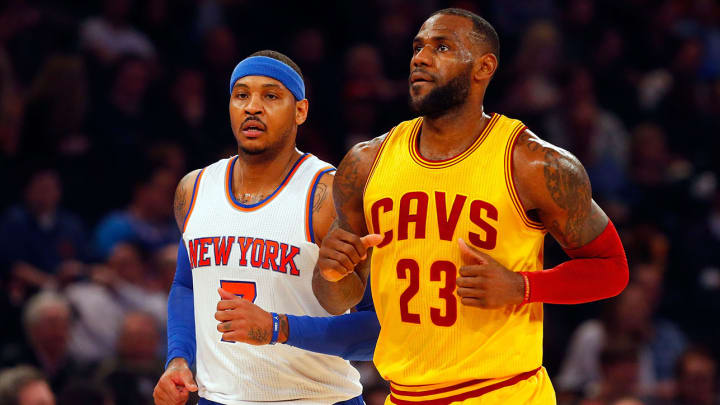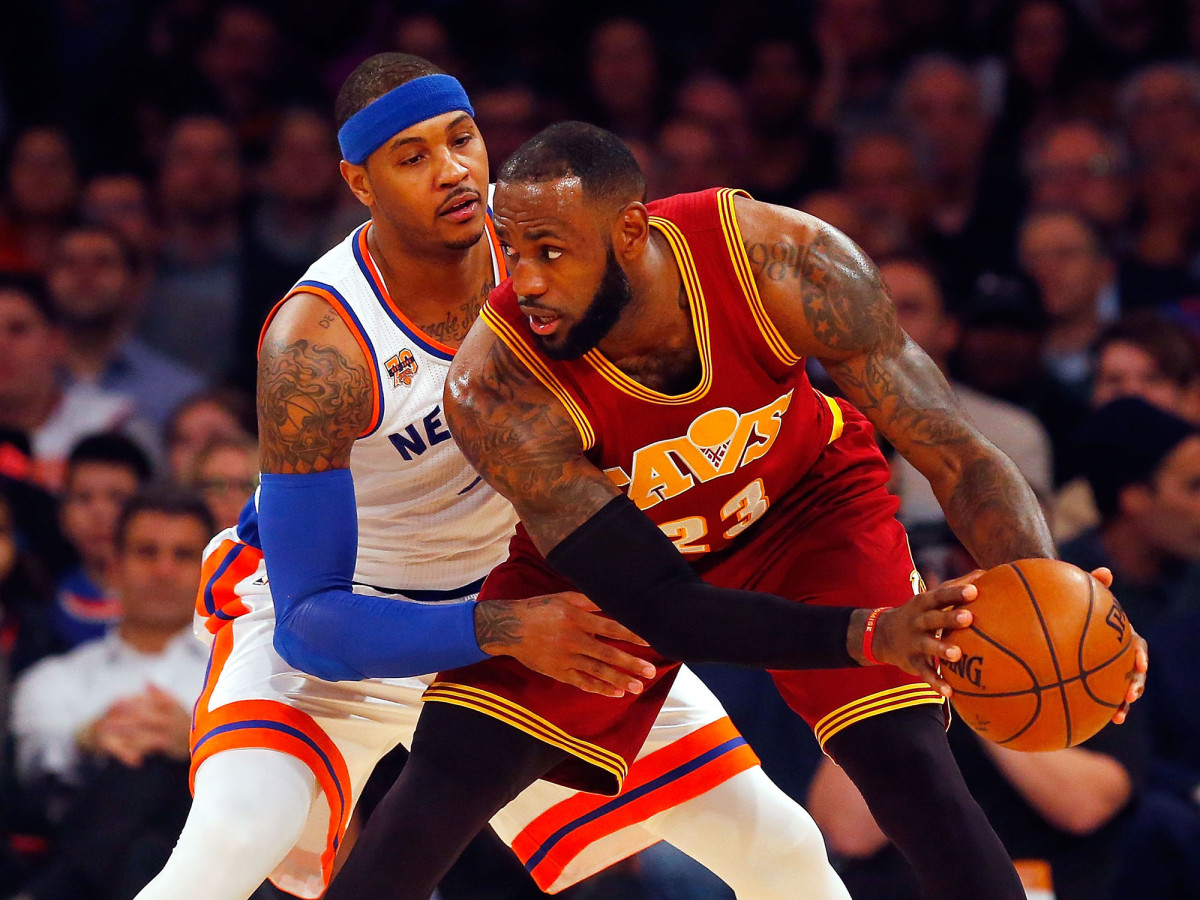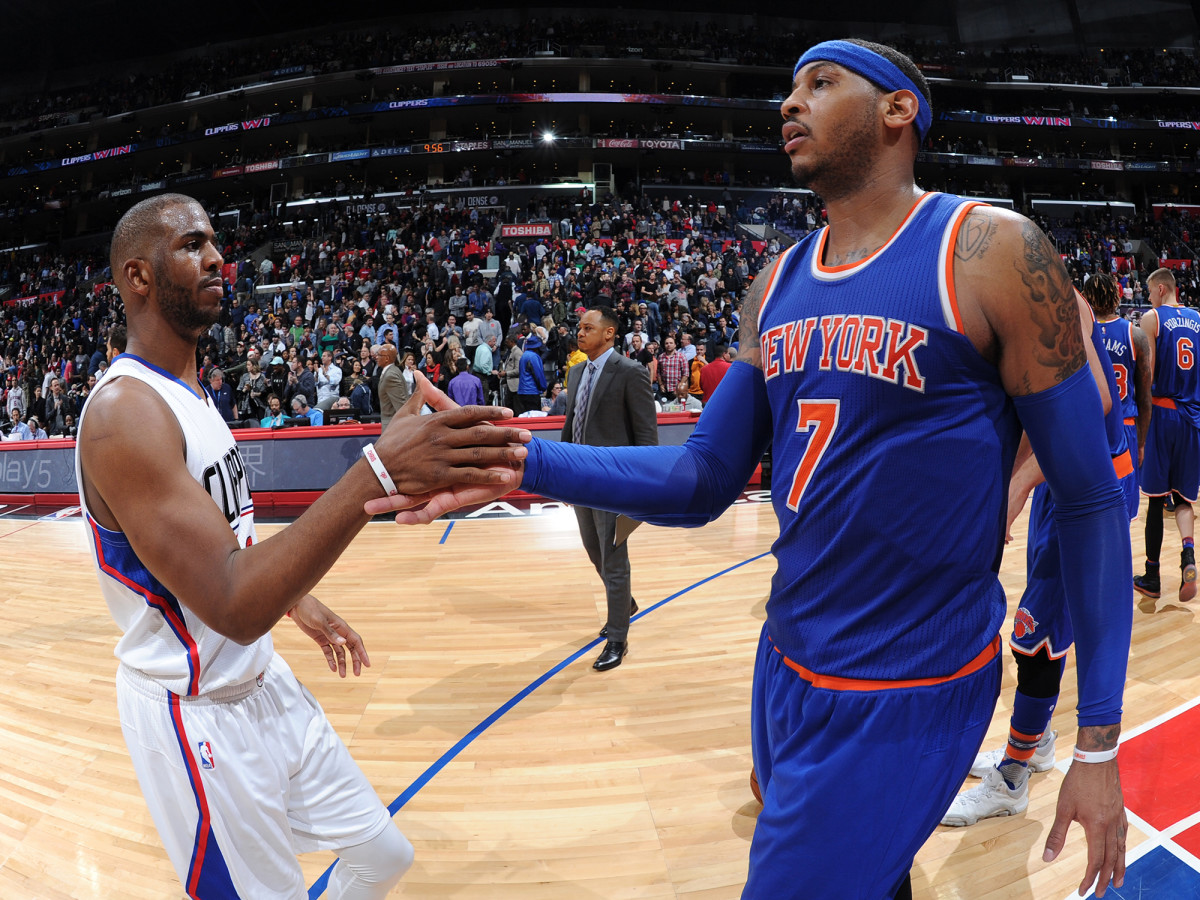Carmelo Anthony A Tricky Fit For Cavs, Clippers Alike

Phil Jackson has done his part, in public and in private, to make the New York Knicks increasingly inhospitable to Carmelo Anthony. Every jab seems intended to push Anthony closer to the edge—all so that at some point, Melo might agree to waive his no-trade clause and be dealt away from a city he and his family clearly love. It was Jackson who gave Anthony that no-trade clause in the first place, baked into a five-year, $124 million agreement by a team that was then desperate for him to stay.
A franchise’s interests can turn just that quickly. These days, Anthony is a declining 32-year-old on a team whose fate is hinged to a player more than 10 years his junior. Everything the Knicks do from this point should be predicated on getting the most out of Kristaps Porzingis and his best years to come. Anthony is superfluous to that goal; not a direct obstruction, necessarily, but a subtle one in some respects who doesn’t entirely align with what New York needs. The desire to trade Anthony is defensible and understandable. Jackson’s tactics in attempting to reach that end are painfully transparent, if not a bit slimy. Maybe, in the end, Jackson gets what he wants.
The Joker: Nikola Jokic Gets Serious In Denver
Regardless, Anthony reserves the right to essentially choose his destination in a potential trade—part of the reason why the Clippers and the Cavs are among the most plausible trade partners. And why agree to anything less? In either case, Anthony would join a winning team led by a close friend (Chris Paul and LeBron James, respectively). Los Angeles would offer some of the same metropolitan appeal that New York does. Cleveland is close enough to a title that basketball alone might make relocating there more palatable to Anthony. Both franchises are at least in a position to consider that kind of move, though it’s worth wondering just how helpful Anthony would be to teams already at high levels of offensive proficiency.

Part of Anthony’s appeal is his relative success when carrying a heavy load. Only so many players in the league can operate at his level of usage while maintaining a viable level of efficiency. Anthony might fall toward the lower end of those ranks, though his ability to manufacture offense from one-on-one situations makes him a valuable asset when better options fail to materialize. The upside of that skill pays off more for a team like the Knicks than it would the Cavs or Clippers.
In either case, Anthony would be a third option—and for good reason. No team should want him creating at the expense of LeBron James or Kyrie Irving, nor Chris Paul and Blake Griffin (assuming they return healthy). Having a third creator of Anthony’s caliber can pay off in big ways, though distilling him into that kind of role would only put a spotlight on the other areas of his game. When Melo isn’t scoring in volume, every other aspect of his game becomes that much more important.
Isaiah Thomas: The Boston Celtics' Little Ticket
This is where things get messy. Anthony can be a good passer but so often chooses to stop the ball or shoot. He can be a competent defender in spots but has thus far played a crummy defensive season for a terrible defensive team. The rebounding helps, as does his spot-up shooting. Yet either of these prospective new roles would be a dramatic departure from everything Anthony has grown accustomed to in the NBA. His entire offensive diet would have to change; while either L.A. or Cleveland would undoubtedly let Anthony feel his way into the offense, the eventual hope would be a sort of balance. Anthony would be made better by playing on a roster of contending caliber, particularly those with the two best passers in the league.
This is where the fantasy of Olympic Melo—a flamethrower scorer surrounded by other stars—comes alive. If an NBA team just had the kind of talent that would save Anthony the trouble of creating offense, perhaps he could focus even more of his energies on finishing. It’s an enticing notion, but one that in practical terms would ask a high-level team to upend its offense in service of a midseason acquisition. That’s a big ask, even for a Clippers team stumbling in the standings and a Cavs team that may or may not “need a f***ing playmaker.”

Some degree of disruption can be healthy. Los Angeles, in particular, might be due for some kind of structural shake-up—even if it would transform what Doc Rivers has long thought he needed out of a starting small forward. Landing Anthony would cost depth, fold certain lineup options, and possibly require draft picks. But it could, under the right circumstances and offer specifics, be the kind of move you make regardless of fit.
If the Clippers can land Anthony without giving up any of their core four in the process (technically possible, if seemingly a long shot given the return), their decision could be made for them. Neither Paul nor Griffin is guaranteed to be their best physical selves come the postseason. Hell, even striving for balance in that revamped starting lineup would be an incredible luxury. Anthony is still a good enough scorer and a prospective contributor in enough other regards to make that kind of move for its own sake.
Does Cleveland Need Playmakers? The Truth Is In LeBron James's Turnovers
Cleveland would have to give up more, one way or another, to make the trade math work. Deal constructions involving Kevin Love should be a non-starter; Cleveland is done no good by getting older, smaller, and less flexible, especially when eyeing the Warriors on the horizon. Even low-ball counter offers, though, would require giving up players the Cavs have relied on heavily: Channing Frye, J.R. Smith, and Iman Shumpert. None of those players are even remotely as effective as Anthony. Yet if forced to trade at least two of those players, Cleveland would gut an already limited wing rotation and alter some of its most transformative lineups.
It’s an interesting mental exercise: How much would a team with even a plausible chance at contention give up—both in assets and continuity—for a shot at a complicated, one-way player like Anthony? There’s an obvious, undeniable firepower that comes with acquiring Melo, not to mention a stark shift in the ways opponents will approach their defensive gameplanning. Yet even that can’t always overwrite the very real questions of how much sense Anthony really makes as the third priority on a high-functioning team. That spot on the pecking order, traditionally, is one of notable sacrifice. Anthony’s game can only afford to concede so much. The exact calculus of that give and take—the range of what Anthony has to offer when he’s no longer the only go-to-scorer—decides everything.
